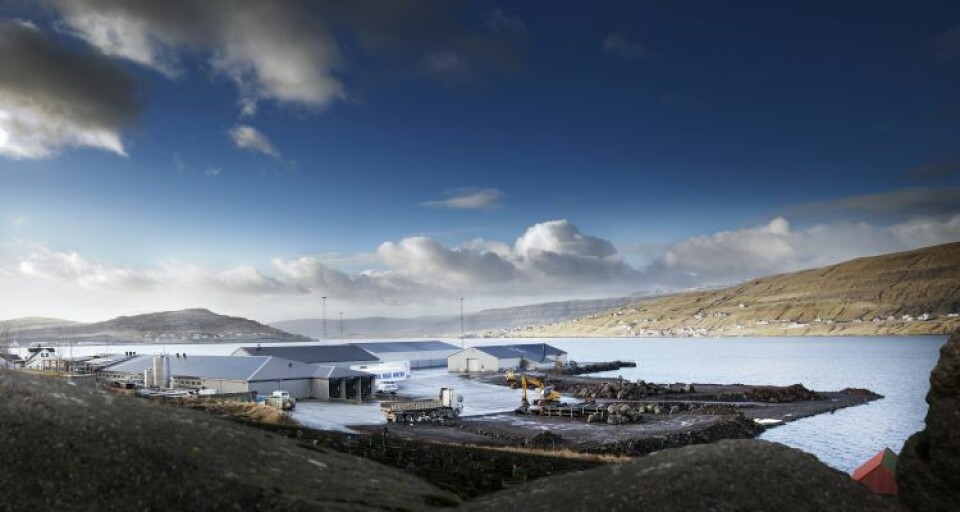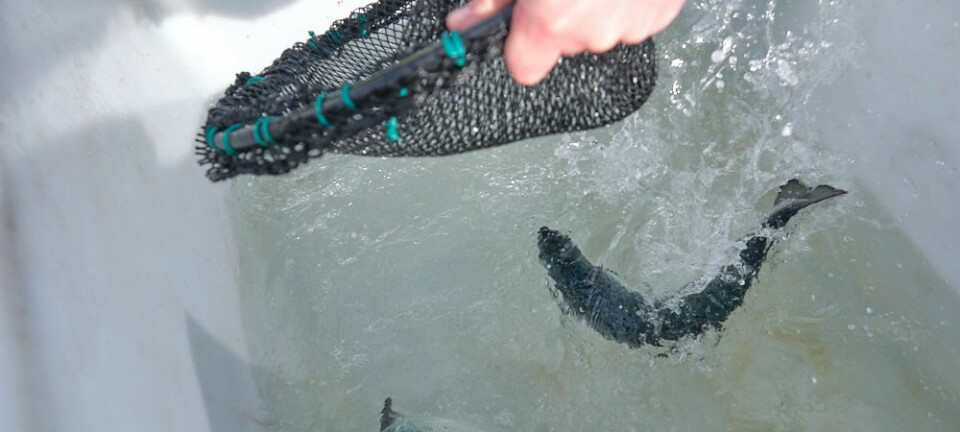
Bigger harvest compensates Bakkafrost for lower prices
The Faroes’ biggest salmon farmer, Bakkafrost, made an operational EBIT of DKK 268 million (£30.7m) in the first quarter of this year – exactly the same as in Q1 2018.
Bakkafrost harvested 13,707 tonnes gutted weight in Q1 2019, an increase of 1,470 tgw (12%) compared to the same period last year, which helped drive up revenue from DKK 667m in Q1 2018 to DKK 755m in Q1 2019.
This helped offset the fact that Bakkafrost’s achieved prices in the quarter were lower than in Q1 2018, which had a negative effect on the operational EBIT.
Profit for the quarter was DKK 212.8m (Q1 2018: DKK 272m).
Farming segment
The farming segment made an operational EBIT of DKK 229.7m for Q1 2019, which corresponds to NOK 21.86 per kg.
The Value-Added Products (VAP) segment made an operational EBIT of DKK 1.3m for Q1 2019. The VAP production was 4,700 tonnes gutted weight in Q1 2019, compared to 2,100 tons gutted weight in Q1 2018.
The combined farming and VAP segments made an operational EBIT of DKK 231.1 million for Q1 2019, which corresponds to NOK 21.99 per kg.
The operational EBITDA for Bakkafrost’s Havsbrun FOF (fishmeal, oil and feed) segment was DKK 65.3m.

Disrupted balance
Chief executive Regin Jacobsen said: “The disrupted market balance from Q4 2018 into Q1 2019 resulted in a weaker than expected result in the farming segment in the first part of Q1 2019.
“We are pleased, however, to experience a better market development and more activity in the VAP segment.
“The new hatchery at Strond is now about to start the fourth batch, since the first eggs were hatched last summer. The first smolts will be transferred to sea sites in the second half of 2019.
Smolt capacity
“The biological development was very positive during Q1 2019. Investments in reducing risks, improving efficiency and creating growth continue with several new projects, mainly focusing on smolt capacity in addition to a new live fish carrier and a new biogas plant.”
Bakkafrost expects to harvest 54,500 tonnes gutted weight in 2019, up from 44,591 tgw last year.
The company expects to release 13.5 million smolts this year compared with 12.5 million smolts in 2018 and 9.9 million smolts released in 2017, and aims to be self-supplied with 500-gram smolts by 2021.
The share of Bakkafrost’s sales taken by the EU market increased from 31% in Q1 2018 to 50% in Q1 2019. The US’s share increased from 16% to 23%, and Asia’s rose from 21% to 24%.
Sales to Eastern Europe decreased significantly, from 32% to 3%.























































